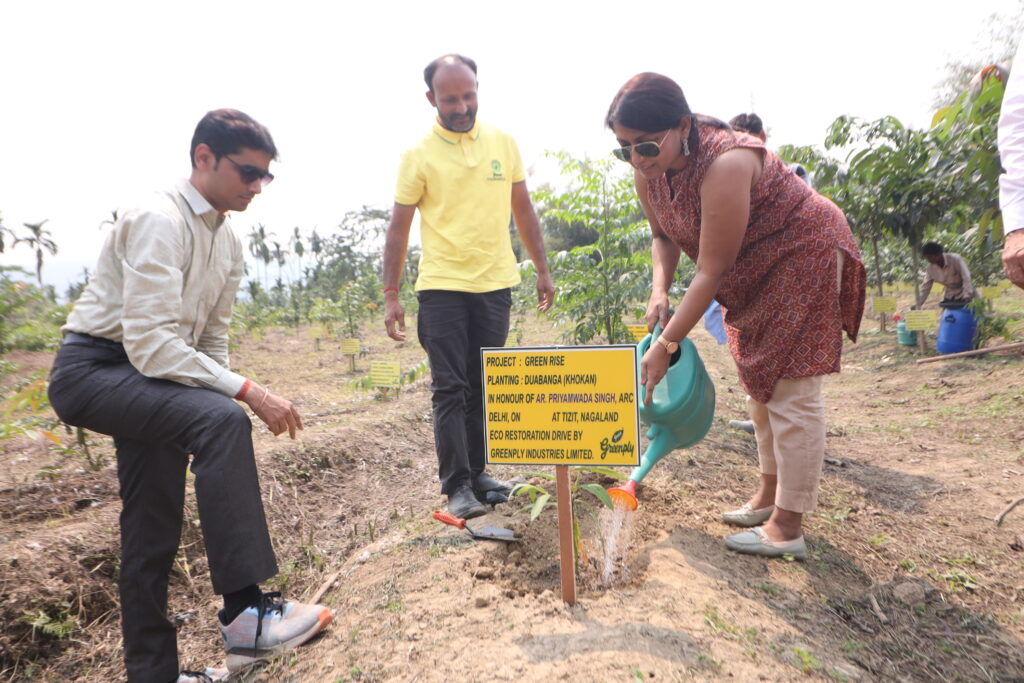The Indian plywood industry appears to be one of the most sustainable sectors in India. Most plywood makers have got themselves certified with Forest Stewardship Council (FSC®) which ensures manufacturers source wood from sustainable sources.
Heightened focus on indoor air quality, often many times worse than outdoor air quality, has also forced the plywood sector to adopt Zero-emission technologies. They reduce indoor emission by off-gassing of formaldehyde – a component used in adhesives and resins to bind the wood panels. The plywood is E-Zero emission compliant when the formaldehyde concentration is less than or equal to 0.5 mg/litre.
Established in 1984 by Mr. Rajesh Mittal, the Kolkata head-quartered Greenply Industries Limited, the 40-year-old company has grown significantly from a sawmill and a plywood production facility in Nagaland to a prominent sustainable plywood brand. It is today a market leader with 26% share of the organized plywood market and 30% share in the MDF (medium density fibreboard). It is also a market leader in adopting holistic sustainability in material sourcing, manufacturing, and distribution.
Company officials say Greenply was the first in the wood and panel industry to introduce a range of Zero Emission (E-0) products that enhance indoor air quality. “The E-0 range not only stands for strength and durability but also comes with internationally approved certification by the California Air Resources Board (CARB) for conforming to E-0 grade emission and low Volatile Organic Compounds.”
The company promises to come up with more such product innovations that will be free from the emission of any harmful gases. Mr. Manoj Tulsian, Joint Managing Director & CEO, Greenply Industries Limited said, “Greenply is in the process of developing the AskGreenply platform to share information and create awareness on the need to keep the indoor air quality (IAQ) under check.
“Sustainability is at the heart of our operations. We operate under a holistic lens of sustainability, guided by a formalized ESG360 roadmap that shapes our sustainability initiatives,” he added.
Greenply’s manufacturing facility in Tizit, Nagaland, has been certified by the Forest Stewardship Council (FSC®) for its sustainable plantation unit and is said to be the first company to have successfully achieved the certification in the interior infrastructure segment in India.
Also, its Forest Management Certification ensures promoting and implementing of sustainable farm management practices and enhancing the quality and livelihood of the local group members associated with the project. This certification provides an assurance to consumers that the products they are buying come from a responsible/sustainable source and protects the rights of indigenous people to use the forest and helps to combat deforestation, forest degradation and illegal logging in certified areas.
Greening Architects

Greenply has been inviting architects from around the country, in recent months, to its Tizit facility, to demonstrate its tree plantation drive and enlist their support for its sustainability mission.
Called ‘The Green Rise’ the project involves planting saplings in architects’ names. Each tree is labeled with a barcode containing information such as the architect’s name, address, plantation date and time, tree species, and contact number. Proceeds from harvesting these trees, after about eight years, will go to charitable organizations or schools in the architects’ names.
As of April 2024, Greenply’s cumulative plantation across the country involved 52,983 acres of land with over 41.57 million saplings. The company’s aim is to plant 50 million saplings of a variety to local species by 2025 with support from state governments, and local communities.
With demand for plywood growing at more than six percent per annum, the challenge facing all plywood manufacturers is how to continue to source raw material sustainably. Greenply will bank on its 50 million saplings plan and its close relationship with local Naga communities to grow sustainably in the future.
The plywood sector in India and globally will need to double up its efforts to promote sustainable forestry, improve its manufacturing processes, and encourage recycling and responsible disposal to thrive in the coming years.











